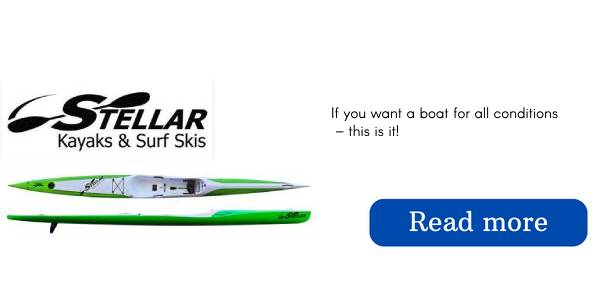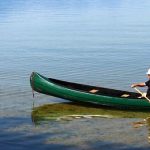Over 90 canoe manufacturers were listed in the Canoe & Kayak Magazine 2006 Buyer’s Guide, and this doesn’t include many of the smaller companies that build only a few canoes a year. The magazine lists over 900 models of canoes.
There are a lot of canoes to choose from, which can make it difficult to decide which one to buy. The average cost of a canoe is around $1000 US, which can make first-time buyers nervous about their purchase.
It doesn’t have to be that way though. If you know how you’re going to use your canoe, it will be easier to buy one. Understanding construction materials, canoe shapes, and the designer’s intentions can help you narrow down your choices to a few canoes that will work for you.
How Will You Use the Canoe
Before you purchase a canoe, you should consider what activities you will be using it for. Some canoes are designed for specific purposes and may not be suitable for other uses.
Solo Vs. Tandem Canoes
The easiest decision to make about buying a canoe is deciding which one to buy. A canoe meant to be used by a single person has only one seat in the center. Most solo canoes are not designed to carry two people, and will not perform well if they do.
A tandem canoe is a canoe with at least two seats that is meant for two canoeists. A duffer is a third canoeist on larger boats.
Pick the Type of Canoe Trips
After deciding if you want to tandem or solo, you need to look at what types of trips you will be taking and what the conditions will be. The following list is a good starting point to help you figure out what you want the canoe to do.
- day trips, overnight camping trips, week long camping trips
- streams, rivers, lakes, big lakes
- low distance trips, long distance trips
- fishing, bird watching, photography or simple paddling
- racing, touring, just messing about, family trips, picnics, for the kids
- whitewater, flat water
For example, as a buyer, you may want a canoe mainly for day trips, but will take week long camping trips once a year on lakes and some big lakes, most will be low distance trips, except for that one trip, and you’ll be fishing out of the canoe, your kids will come on day trips and you’ll probably never go on whitewater.
If you want your canoe to do something specific, take a few minutes to come up with a statement about it before you go to the store.
Solo Canoes
Cliff Jacobson says that solo canoes are different, and they may be. Most available models are designed for river or flat-water touring, though, so there’s not a lot of choice if you’re looking for a recreational model.
Racing, Whitewater, and Play Canoes
There are also different types of canoes based on their purpose, such as racing, whitewater, and play canoes. If you want to use your canoe for whitewater, for racing, or for freestyle play, make sure you pick a canoe that is specifically designed for those activities.
Otherwise, you may find that your canoe does not do what you wanted it to.
Simple Canoe Design For the First-Time Buyer
You don’t need an engineering degree to understand the basics of canoe design if you are a first-time buyer. John Winters, a famous canoe designer, writes in The Shape of the Canoe, that the primary characteristics of canoe design are:
- Aesthetics
- Construction
- Controllability
- Cost
- Displacement
- Durability
- Maintenance
- Seaworthiness
- Stability
- Speed
There is no perfect canoe design that would be best in every category, as most characteristics involve some trade-off with each other. Here is a quick breakdown of the characteristics of canoe designs.
Aesthetics
A canoe’s aesthetic look may give the appearance of a certain type of performance, but it does not actually affect the canoe’s performance. There are two main types of canoes you will see: those with low stems and modern appearances, and those with high stems and recurved appearances.
This later style is more traditional and resembles canvas and cedar canoes from early in the twentieth century. The high ends of traditional canoes can be detrimental in windy conditions.
The taller the sails are, the more likely that wind will move the boat around.
What Separates Canoes from Kayaks?
We assume that you have done some research and know the difference between a canoe and a kayak before reading this article. We are happy to welcome you to the outdoors if you are new.
You will typically see differences between the two of them.
Canoes are usually open vessels that can carry multiple passengers. They are designed to be paddled by people using paddles. Kayaks are traditionally a vessel that you sit down into, as opposed to a more open vessel.
Canoes are good for carrying a lot of gear, while kayaks are more agile but can’t hold as much.
The following descriptions are generalized and in some cases, the vessels can appear very different depending on the activity. To identify canoeing from kayaking, look at the number of blades on the paddle. Paddlers in a canoe will always have a single-bladed paddle, and the user will be facing forward in the boat.
The person will still be facing forward in a kayak, but instead of one paddle, there will be two paddles, each with a blade on each end.
If you are planning a camping trip or traveling a long distance, a canoe is usually your best option.
Where Will You Use the Canoe?
For example, if you want to paddle in open water far from shore, you might lean towards a longer, faster canoe. If you want to use your canoe in open water far from shore, you should get a longer, faster canoe.
If you are planning on paddling near a campsite, cottage, or calm lakes, a recreational canoe may be best for you. If you are going to be making trips that last for more than one day, you might want to consider getting a tripping canoe.
If you plan to travel through faster, rougher water, then you should choose a boat designed for whitewater. The design of these kayaks allows them to resist impacts, handle obstacles, as well as the more aggressive paddling techniques that are necessary to navigate rough water and run rapids.
Here is a list of some of the different types of water you may come across. Rapids are classified according to how difficult they are to navigate, with class 1 being the easiest and class 5 being the most difficult.
The class is typically written using Roman numerals.
Categories:
- Lakes, Ponds, and Inshore (Flatwater)
- Rivers and Creeks (Class I-II)
- Whitewater (Class III+)
- Open Water and Ocean
How Do You Plan To Store Your Canoe?
We will discuss the different materials a bit further down. When choosing a canoe, you should pick a place to store it. For example, do you plan to store your boat in your garage where it will be safe from bad weather?
Do you plan on keeping your canoe right side up or upside down? We are mentioning this because you are likely not going to want to spend extra money on a wooden canoe only to store it outside. Aluminum boats don’t rust as easily as other materials.
Make sure you have enough indoor space to store your canoe. Do not buy a canoe without taking into account where you will store it. Make sure you have enough space for the canoe before making your purchase.
Before you buy a canoe, make sure you measure the storage location and compare it to the canoe’s specifications. If you’re buying the canoe in person, ask a salesperson for the canoe’s measurements. When measuring the canoe, be sure to note the width as well as the length.
Materials
The history of canoes dates back thousands of years and they have been found in various parts of the world. Archaeologists have found evidence of human settlements dating back 8,000 to 10,000 years ago in the Netherlands, Nigeria, and east China.
Some of the earliest canoes were made from logs that were hollowed out. As far back as history goes, people have made boats out of birch bark or stretched canvas over frames. Nowadays, canoes are mostly made of different kinds of synthetic materials.
These synthetics all have their own advantages and drawbacks. It doesn’t matter what your canoe is made of, it’s important to store it well so it will last as long as possible.
Beyond that, you’ll need to think about your canoe’s weight and how long it will last, both of which depend on the materials it’s made from.
There are many types of materials available, including proprietary designs. We will only talk about some of the more common large groups of materials.
Aluminum
Since World War II, aluminum canoes have been one of the most popular types of canoes. Some stores continue to sell aluminum canoes even though plastic ones are now better. Aluminum canoes are heavy, slow, and cold to the touch.
They are also loud. Any knock against the canoe echoes through the water. Although they are strong and long-lasting, dents are difficult to remove and any holes will need to be fixed by a professional welder.
The price is fairly consistent with Royalex.
Cedar and Canvas Canoes
The canoes made from cedar and canvas are the same as the ones that were originally made from birch bark. Canvas replaced birch bark as a waterproof covering because it is much harder to find large amounts of high-quality birch bark.
These canoes are built over a male mold on which the ribs are bent, planks nailed to the ribs, the canvas is stretched over the planks, filled, painted, and the boat is trimmed out then with seats, etc”¦
This construction makes a beautiful traditional look boat, but requires plenty of maintenance to keep it going. Other construction types are much more resistant to damage from rocks and fast water.
Appropriate care will extend the lifespan of an item by hundreds of years.
Wood and Fiberglass
Wooden and fiberglass canoes typically have a wooden core with fiberglass covering it in order to make the canoe waterproof and stronger. This text is discussing some of the most beautiful canoes that are tough when built correctly.
They are not as durable as plastic or composite canoes. Additionally, these canoes often need to be coated with a fresh layer of varnish every year.
Rotomolded Polyethylene
The least expensive canoes are typically made of rotomolded polyethylene. This plastic is very durable, making it a good choice for both people who want to use it for recreation and for whitewater activities.
The main disadvantage of rotomolded canoes is that they weigh much more than fiberglass models. The fabric can become deformed over time due to exposure to heat and UV rays.




